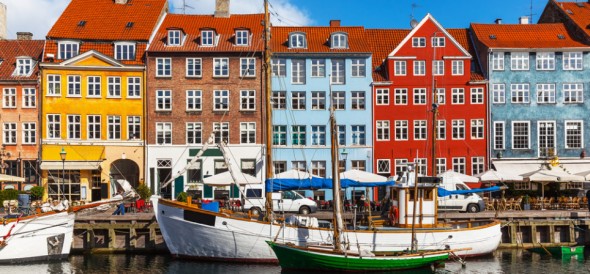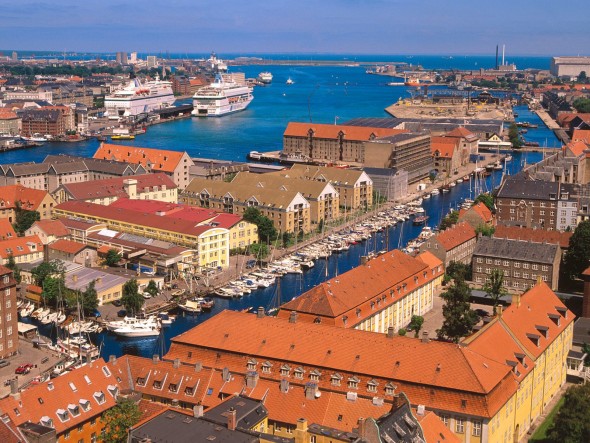Global warming poses a real threat to cities but planners in the Danish capital are taking visionary steps to ensure its resilience – and success – as far ahead as 2100. The city approved a plan for carbon neutrality, while a 10-person team focuses on how the city will adapt to a changing climate.


Tackling climate change: Copenhagen’s sustainable city design
By Elisabeth Braw, Published in the Guardian UK
Visualize the world in 2050: convex streets that collect water from superstorms and pocket parks that absorb heat and can be turned into reservoirs. Welcome to Copenhagen, where planners are preparing the city for the effects of climate change several generations from now.
“We’ve looked at how climate change will affect Copenhagen in the long-term future”, says Lykke Leonardsen. “For Copenhagen, the most serious effect of climate change will be increased precipitation, so we’ve developed a plan that addresses how to catch all the rainwater in the city.” Leonardsen, a city planner, belongs to the 10-person team working solely on long-term climate change adaptation, planning ahead to the year 2100.
By 2025, Copenhagen will be the first capital city in the world to become carbon neutral. To reach this ambitious goal, the city council has adopted a comprehensive and targeted carbon reduction master plan that aims to take the city’s CO2 consumption from its current level of around 2.5 million tons to under 1.2 million tons in less than two decades. The CPH Climate Plan 2025 pays considerable attention to reducing building emissions, which are responsible for 75 percent of the city’s CO2 emissions. — City Climate Leadership Awards
Like any city located by the sea, Copenhagen will face particular danger as sea levels rise and superstorms hit coastal areas with greater frequency. “In adapting to climate change, cities can choose either grey or green infrastructure,” says professor Stuart Gaffin, a research scientist at the Center for Climate Systems Research at Columbia University, who also advises the New York City government on climate change adaptation. “Grey infrastructure means building walls and barriers. In New York’s case, we’d lose Long Island if we went for the grey option. The green option, which has growing support, includes green roofs, green streets that will capture storm water, and pavements that allow water to percolate through.”
That’s the option Copenhagen has chosen. Leonardsen’s team envisions lowering the level of a local lake, thereby freeing space around its shores. This space will then be turned into a park, with playgrounds and running paths. When a superstorm hits, the lake and its surrounding park will be used for water storage.
And those convex streets? They are main thoroughfares designed by Copenhagen’s city planners to capture water from storms and flooding and direct it to the harbour. Copenhagen in 2050 will also feature smaller streets with plenty of trees, which will slow anticipated flooding “so not everything comes bursting into the cloudburst boulevards at the same time”, Leonardsen explains. Pocket parks will absorb heat and can be turned into water storage during weather emergencies. In addition to storms, flooding and rising sea levels, heatwaves are the most dramatic scenario facing cities as climate change worsens.


If all goes according to plan, Copenhagen’s sustainable climate change adaptation plan – which recently won the Index Design Award – will be completed by 2033. To be sure, Danish city planners operate in an enviable setup, where politicians and local residents alike support sustainable climate change adaptation and are willing to commit the funds required.
Brian Vad Mathiesen, an associate professor of development and planning at Aalborg University, says: “The difference between Copenhagen and other major cities is that they’re very concrete in the short term and also look at what they need to do for the very, very long-term future.
“But in Denmark, sustainable city planning is not a niche; it’s just what we do. And you have to remember that sustainability is not just about the environment. It’s also about creating local jobs.”
Copenhageners, in other words, have realized that doing the right thing for the environment brings jobs – and higher living standards – to the city. “Both from a financial and a sustainability perspective, it makes sense to do as much as possible as early as possible,” says Mathiesen. “If you don’t build things like pocket parks, you’ll have problems with flooding. We can’t live with flooding that brings the city to a halt for several days each time.”
Other cities are embarking on similar plans. Mayor Michael Bloomberg of New York this year presented a record $19.5bn climate change adaptation plan, with 250 specific projects reaching into the 2050s. Toronto, Rotterdam and Boston, too, have advanced plans with solutions from floating pavilions to terraced levees. Some 20% of the world’s cities now have climate change adaptation plans in place. “While governments are mired in negotiations, cities are leaping forward,” observes Gaffin. “City populations recognize the threats from climate change.”
But while pocket parks and cloudburst boulevards sound charming, green infrastructure remains experimental. It’s uncertain how effective percolating pavements will be, for example, and the trees in green streets face daily threats from cars. Besides, nobody really knows what the world will look like in 2050, let alone 2100.
But as far as Copenhageners are concerned, sustainable city design is the only answer to climate change. Morten Jastrup, a senior analyst at Sustainia, a Copenhagen-based think tank, says: “These measures will contribute to a higher quality of life in Copenhagen. We have to consider what will constitute a successful city in the future, because we need highly qualified people to come and work here.”













Pingback: Public Art and the Psyche: Olafur Eliasson on Cities | WilderUtopia.com